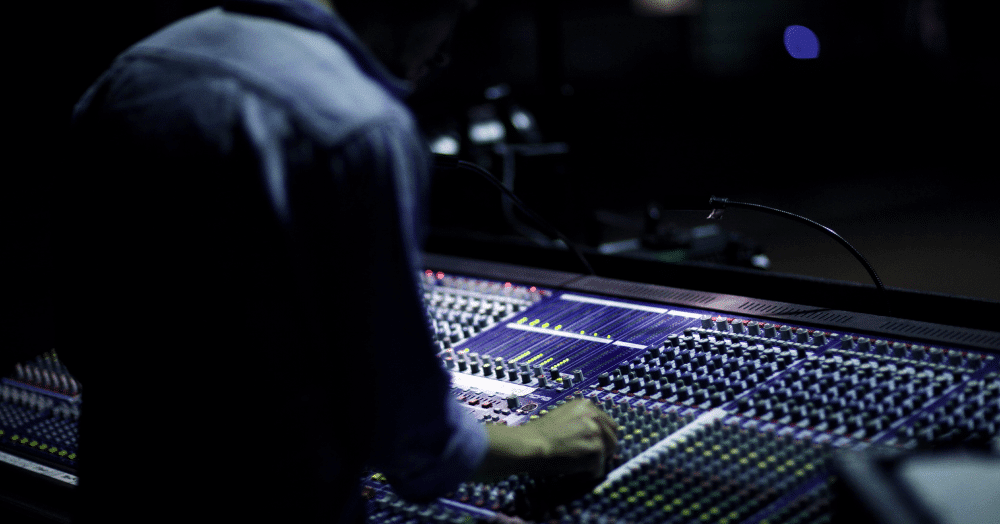The 3 Hats of the Audio Engineer

Making a Scene presents “The 3 Hats of an Audio Engineer”
Whether you are starting your own home studio, or you are looking for a studio to record your next project, the one thing you should understand is there is three distinct disciplines for the Audio Engineer. Each of them requires a very specific skill set. To help you better understand the role of a recording engineer let’s take a look at the 3 hats of the Audio Engineer.
Tracking
The first skill set an engineer learns is how to properly track a project. There is an art to microphone choice and placement. This is a skill that is learned through trial and error and of course what microphones he has access to. There is no right or wrong decisions here other than what sounds good with what is available to use. I have heard some great recordings that were done with some standard SM57‘s and some that used Neumann U87‘s. The tracking engineer has learned how to use what he has on hand to capture that “Sound”.
The second job of a “Tracking Engineer” is to control the gain staging of the audio signal. Gain Staging is the process of taking the signal of the microphone and amplifying it to a proper recording level. The idea is to get a substantial enough signal into your DAW without causing distorted peaks.
Once the signal leaves the microphone, your next decision is to choose the right preamp. There are many types of preamps out there. There are tube preamps, Transformer based preamps, and those based on transitors or IC’s. Each type of preamp brings it’s own character to the sound. That character could either be transparent ( not impart any “color” on the sound coming from the microphone) or will color the sound of a particular microphone. This is again subjective and is determined by what the engineer has on hand. There are quite a few great Microphone preamps that won’t break the bank by companies like Warm Audio, Universal Audio Art and Presonus. .
Now, the most important job of the tracking engineer is to create the environment for the artist to create. His primary job is to do his job in such a way that does not get in the way of the creative flow of the artist. A good tracking session should be fun, relaxed and have a certain creative flow.
This is a VERY important job of the engineer. If you do not capture the sound of the artist properly from this stage there is nothing you can do later to fix it.
Mixing
Once you have all the music captured in the “Tracking” process, the audio engineer now has to put on the “Mixing” hat. The mixing engineer now takes all these recorded tracks and works to fit them into the sonic spectrum to create the final sound or Mix of the music. The Mixing engineer uses such tools as compressors, EQ’s, Reverbs, Delay’s, Etc. to create both a musical space as well as allowing specific instruments to sit in their own sonic space. A good Mixing engineer depends heavily on a good mixing (or listening) environment just as much as hardware and software tools.
The studio should have good speakers, Amps and most important a well treated room to be able to create a place for critical listening. The Mixing engineer is the creative partner to the artist, who has a full understanding on all the principles of compression, EQ and effects and how to best use them to create a specific sound. He is the interpreter between what the Producer or Artists wants and what comes out of the speakers. The Mixing engineer can make or break a project.
Mastering
This is probably the most misunderstood part of the recording process. In the early days of recording, the mastering process was important to make sure the final recorded product could fit within the limitations of the recording media. IF you had too much bass, you could make the needle skip on a vinyl record. As we moved into the digital world where dynamic range was no longer an issue. The Mastering process has been used to fuel the “Volume Wars” by filling the dynamic range potential of the digital media with pure volume.
To best understand the process of “Mastering” think of getting a new paint job on your car. Once you chosen the paint, had it applied and the clear coat is on, it can look pretty good. Then you take the car to the “Detailing” shop where it is compounded and shined. The small imperfections are smoothed out and you get the “Sparkle and Shine” of your new paint job.
The Mastering process is much like this. It gives your recording the “Sparkle and Shine” through the use of critical compression and EQ sculpting. In the past “Mastering Engineers” and even Studios themselves were highly specialized. There are still many of these mastering studios with some pretty impressive (and Expensive) gear to give your recordings that Sparkle and shine. Fortunately for you, if you have a good listening environment, there are some great mastering software suites available that will give you a very good “mastered” sound. Check out Izotope Ozone and Slate Audio which are two of the top products in the field.
[amazon_link asins=’B0774Y8K6W,B003WO20DG,B008N9EQ7I,B01N6SFVMS,1495021750,B00EIKJBHG,B01M6DIGGA,B07BGV4LD1,B07D51JW4S,B001N0LI3Y’ template=’ProductCarousel’ store=’maasc-20′ marketplace=’US’ link_id=’c3f03105-1db1-4e3d-80b4-94c2730322a1′]
Discover more from Making A Scene!
Subscribe to get the latest posts sent to your email.








